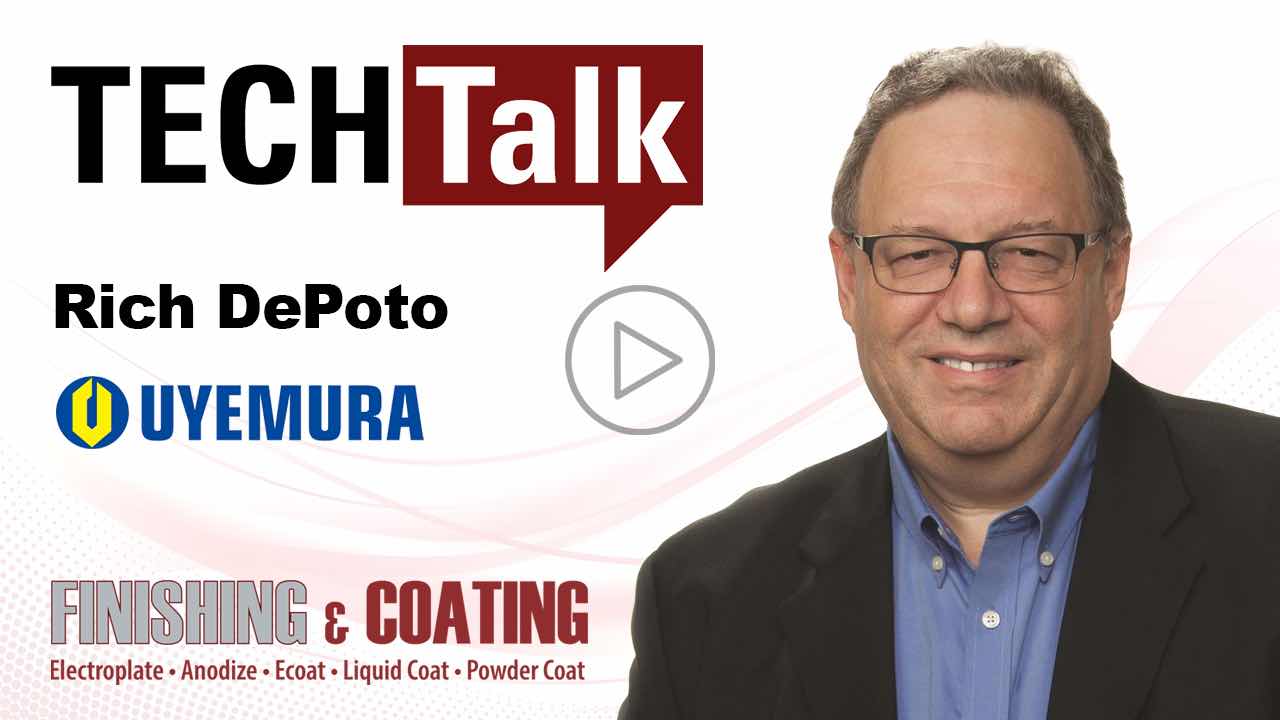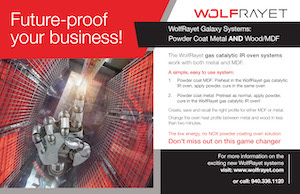Silver has long been the metal of choice in finishing electronic components, and the surge of electric vehicles has put silver at the forefront of the automotive industry.
But Rich DePoto, Business Development Manager with Uyemura International, says in this TechTalk with www.FinishingAndCoating.com that with the emergence of EV units, “all of the rules for automobiles have changed, and for silver.”
That’s why DePoto and the Uyemura team have been rolling out the development of its new Arguna platform of chemistry, which he says is intended to address all of the new demands for existing and future electronic vehicles.
“Things have changed,” DePoto says. “There are four areas that have really been changed, and No. 1 is that voltages have gone from 12 to 24 to 1,000 volts.”
Secondly, Depoto says temperatures — which were around 80°C max and often under the hood and easy to protect in an electric vehicle — in sealed components such as powertrains now all get to 150°C.
“That is dramatic,” says Depoto, who adds that electromigration under those operating temperatures can become an issue, as silver is susceptible to dendritic growth and shorting
Lastly is moisture in some of the components. He says in the past, some moisture could be tolerated, but not with the higher voltages, temperatures, and electromigration under all of those conditions.
“Silver needs to change,” DePoto says. “It needs to be as silver on steroids.”
For example, originally, automotive specifications called for plated silver to withstand 1,000 to 2,000 insertions before deterioration started. But DePoto says OEMs would like to write a specification of upwards of 10,000 insertions.
“At this point, that is really impossible to meet, and so silver had to change,” he says. “And one of the classic ways to do it is to make it harder.”
That’s why Uyemura has put an entire platform of alloyed products — the Arguna line — in silver to be able to get a range from the existing 70 of pure silver all the way up to well over 200 hardness.
DePoto says finishing applicators are looking for high temperatures and an increased number of insertions, and Uyemura, in its R&D, went after increasing the hardness and the mating to meet that demand.
“It got a little complicated because there still will be a fair amount of base pure silver in the system,” he says. “So not only does the hardness have to be good when a connector is built for itself in terms of insertions, but it also needs to work when mated with the standard silver.”
Uyemura has worked very closely with several electronic automotive companies to test that process and make it work. The OEMs also asked them to expand their platform from alloys into dispersions, which have been in the industry for a long time now and are different than an alloy.
“This is sort of a matrix of silver and other materials, such as Teflon or graphites or things that can afford the kind of lubricity that a connector would really like to see,” Depoto says. “The platform is expanding and has actually included sealants that protect the surface and not have oxidation and discoloration.”
And as for the 10,000 insertions that the EV industry and others were asking for? DePoto says that Uyemura’s researchers were able to meet that objective.
“Using the dispersive strategy, we were able to obtain that and remove all of the lubricants from the system,” he says. “The system is a dispersion of silver, and it’s self-shedding, and we were able to obtain wear resistance for 10,000.”
Please visit www.Uyemura.com






































